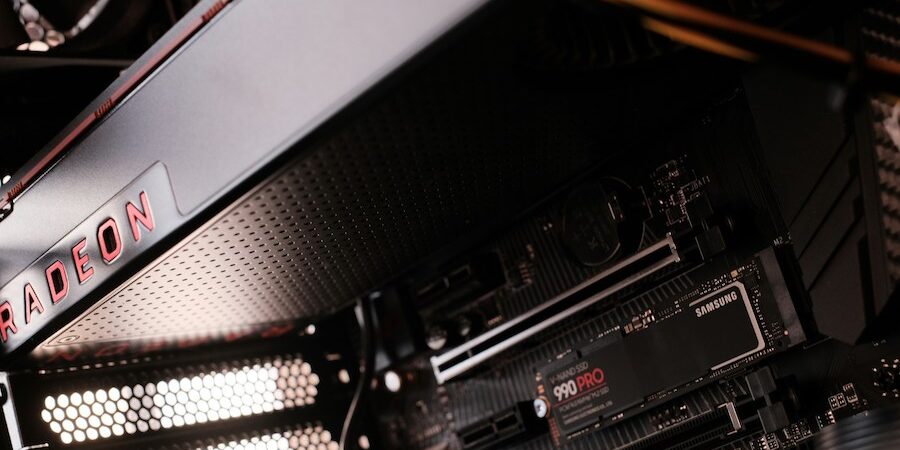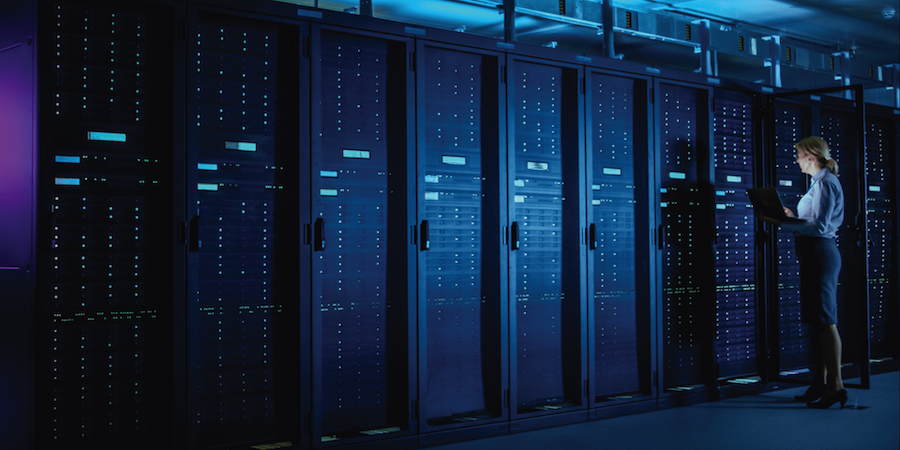Big data, analytics and AI have transformed the way businesses work. For small and midsized businesses (SMBs), which comprise about 44% of GDP and employ nearly half of the American workforce, according to the U.S. Chamber of Commerce1, this means figuring out not only how to handle new technology but also how to store the data that businesses need. Indeed, many SMBs end up asking how much storage capacity they’ll need and which technology they should implement.
For many companies, the answer is a mix of devices, including solid state drives (SSDs), which have grown in the market and overtaken all other storage hardware form factors2. Want to learn how much data storage is needed for a small business? Read on.
Tapping SSD for capacity, reliability
SSDs feature non-volatile solid state chips that contain memory cells. These cells, called flash memory, store data when electricity is introduced to them. SSDs differ from hard disk drives (HDDs) in several ways. Most importantly, they aren’t prone to mechanical failure and slow speeds. That’s because HDDs — including external hard drives for business — spin mechanical magnetic platters and use an actuator arm to hunt for and read data. SSDs, on the other hand, have no moving parts. Instead, they use flash memory to store, read and write data, which significantly speeds the process, for example, when the end user is looking for a one-off file or performing ongoing data-intensive operations, such as running an operating system or playing a video game.
The lack of moving parts in SSDs extends reliability, too. While the failure rate of HDDs grows significantly year-by-year as it ages, it remains low in SSDs. One study3 notes a 3.55% failure rate on HDDs in year five, compared to just 0.92% in SSDs in the same period.
Get your complete guide to SSD management
Discover how to effectively adopt and manage SSDs in your organization with this ultimate guide. Download Now
Finding the right SSD size
With such a wide range of SSD sizes, it might seem confusing to choose the right SSD for the right workload. Here’s one rule of thumb that will help: Capacity — the ratio of available drive space to total drive size — affects the performance of all SSDs. When a drive has plenty of empty blocks, it’s much easier for the device to find data on the drive.
That said, for some workloads and business services, you should consider specific SSD capacity options. If you only need an SSD for storing simple files, such as Microsoft Word and other text-based documents, or carrying those documents from one system to another, you can get away with a small 250GB drive.
If you’re using an SSD for basic backup and file storage, a 500GB SSD drive – is probably enough. However, to smoothly run an operating system and specific programs, such as office applications, you’ll need an SSD with more space, so opting for a drive in the 500GB range will serve you better.
Any tasks that involve professional editing for videos or images require a lot more storage. In that case, you’ll want to aim for 1TB to 2TB of storage space. Gaming also requires more SSD space. Shoot for a minimum of 500GB to 1TB, and even higher if possible.
Finally, if you’re looking to jump into AI, machine learning and data mining, consider options 1TB and higher. Don’t rule out 4TB or 8TB SSDs as being too large, either, as they have high read and write speeds, as well as plenty of space to support system performance.
Enterprise vs. client models
No matter which SSD form factor you choose, consider upgrading to an enterprise option if your workload is running 24/7. An enterprise SSD, as opposed to a client SSD, is engineered to be even more reliable and last longer. Many enterprise SSDs come with a longer warranty and higher IOPS — the input/output per second — thanks to the interfaces they use to connect to the device.
Finding the right SSD doesn’t have to be difficult. The best way to choose is to lay out what you’ll be doing with the SSD, specifying tasks, times and storage needs. That should lead you directly to the right device for you and your workload.
Learn more about the different tiers and types of SSDs and what each is capable of. Check out the range of SSDs at Samsung to help match your needs to available models.
1 McKinsey & Company. “Winning the SMB tech market in a challenging economy.” February 21, 2023.
2 Information Technology IT News. LinkedIn Pulse. “Portable SSD Market Size Insights 2023-2031.” November 20, 2023.
3 Backblaze. “The SSD Edition: 2022 Drive Stats Mid-year Review.” September 13, 2022.








